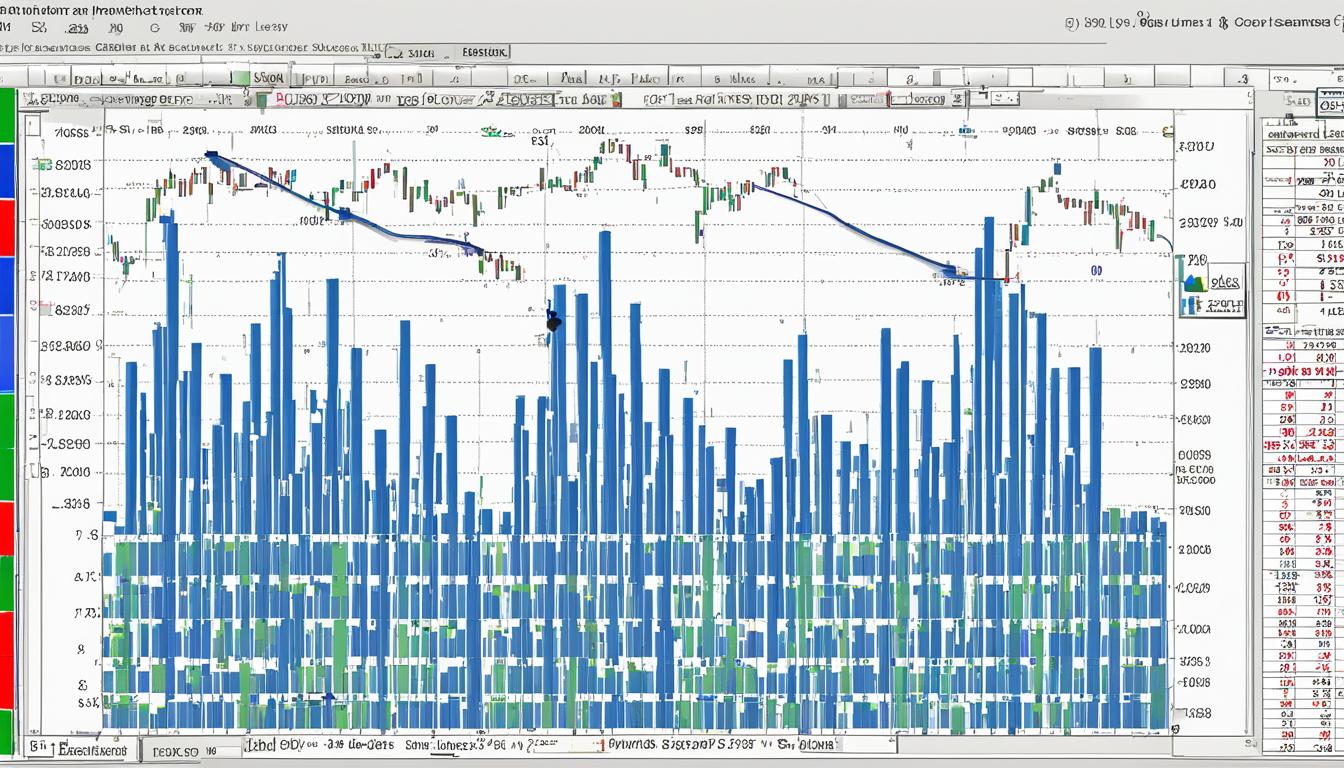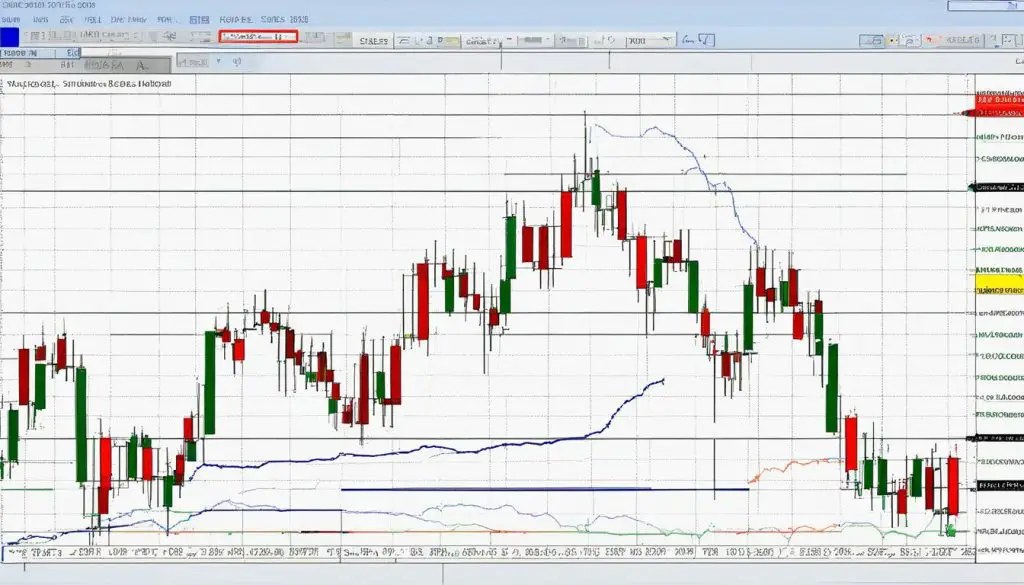Delving into the intricate world of trend based fib extension necessitates a deep understanding of the core principles that anchor Fibonacci’s influential role in financial trading. This methodology harnesses Fibonacci retracement techniques to conduct precise market analysis, aiding traders in enhancing their trade decision-making processes, and in the refinement of improved trading strategies. The fascinating interplay between Fibonacci numbers and market trends offers a rich tapestry for those seeking to fortify their trading acumen.
The rigorous application of trend based fib extension not only echoes the nuanced art of trading but also provides a scientific approach to tapping into market rhythms. As investors strive for consistency and accuracy, the Fibonacci sequence unfolds as a guiding beacon through the tumultuous terrain of market speculation.
Embarking on a journey to demystify this sophisticated trading tool will unfurl opportunities for traders to catch waves of profitability and steer clear from the ubiquitous pitfalls of market speculation. The subsequent discourse aims to equip discerning traders with the acuity needed for seizing the benefits that trend based fib extensions can impart within the dynamic world of trading.
The Foundation of Fibonacci in Trading
The realms of mathematics and financial trading may seem worlds apart, but they converge beautifully through the Fibonacci sequence, a numeric series introduced to Western academia by Leonardo Pisano, also known as Fibonacci. This sequence not only marks significant mathematical relationships but also powers various trading tools, making it indispensable in the analysis of financial markets.
Who Was Fibonacci and His Mathematical Legacy
Leonardo Pisano, better known as Fibonacci, was the Italian genius who brought the Hindu-Arabic numeral system to Europe. His travels across the Mediterranean allowed him to gather extensive knowledge, which he later organized in his seminal work, “Liber Abaci.” At the heart of his contributions lies the Fibonacci sequence, a simple yet profound string of numbers that forms the backbone of today’s sophisticated trading tools embedded in charting software.
The Significance of the Golden Ratio in Financial Markets
In Fibonacci’s tapestry of numbers, one ratio stands out—the Golden Ratio, or Phi (1.618)—a symbol of harmony and proportion. Its presence can be observed across the universe, from the swirl of galaxies to the proportion of the human face, and resonates particularly in the financial domains, as traders harness its power to predict key price reversal points.
Understanding the Fibonacci Sequence and Its Financial Implications
The Fibonacci sequence transcends pure theory, offering palpable financial implications as traders use key ratios extracted from the sequence—primarily 61.8%, 38.2%, and 23.6%—to map Fibonacci levels. These levels serve as roadmaps to market behavior, indicating where prices might pause or reverse. The additional 50% level, while not derived from the Fibonacci sequence, has earned its place of importance within financial charting software due to its recognized significance in multiple trading methodologies.
| Fibonacci Level (%) | Description | Significance in Trading |
|---|---|---|
| 23.6 | Shallow Retracement Level | May indicate minor support or resistance. |
| 38.2 | Common Retracement Level | Seen as the first major reversal level. |
| 50 | Midway Point | Not a Fibonacci ratio, yet widely respected. |
| 61.8 | Golden Retracement Level | Considered the primary retracement level. |
| 100 | Complete Reversal | Indicates a full swing and potential reversal zone. |
Decoding the Fibonacci Retracement and Extension Levels
The Fibonacci retracement strategy is not just a mere technical term but the backbone of a sophisticated trend-trading strategy. Grasping its nuances allows traders across an array of financial instruments to spot potential reversal signals and set strategic price targets. Fibonacci retracement levels, often visualized in the form of horizontal lines on price charts, serve as indicators where the market may experience support or resistance.
When melded with a thorough market understanding, these levels pinpoint areas where the price action is likely to pause or reverse. The two crucial aspects of this strategy are the identification of trending markets and the exact plotting of Fibonacci levels. Extension levels, on the other hand, provide traders with foresight on where the price could potentially head to, giving a clear road map for setting profit targets.
- Key Retracement Levels: Typically include 23.6%, 38.2%, 61.8%, and sometimes 50% and 78.6%.
- Extension Targets: Common targets are found at 161.8%, 261.8%, and 423.6% levels.
While retracement levels are utilized to gauge pullbacks within a trend, extensions are crucial for predicting the extent of a trend’s movement beyond its starting point. Both tools, amalgamated, form a robust framework for executing well-informed decisions concerning entry and exit points within a market trend.
| Fibonacci Level | Function | Trading Application |
|---|---|---|
| 61.8% | Golden Retracement | Predicting strong reversal points within a trend |
| 161.8% | Primary Extension | Establishing long-term profit targets |
| 261.8% and 423.6% | Further Extensions | Anticipating extended market movement for maximizing gains |
Employing a Fibonacci tool requires a thorough analysis and a proactive trading approach. However, the true power of Fibonacci retracement and extension levels is unlocked when they are integrated within a comprehensive trading plan, one that includes a multi-timeframe view and complements other technical indicators for validation.
Trend Analysis Using Fib Extension Levels
Incorporating Fib extension levels into trend analysis equips traders with a powerful tool for interpreting market dynamics. When used alongside other technical analysis methods like trendlines and candlestick patterns, these Fibonacci tools can amplify the predictive value of potential market movements.
Integrating Fib Extensions with Trendlines and Candlestick Patterns
Traders seeking a more sophisticated approach to market analysis often turn to charting software that allows for the visualization of Fib extension levels in conjunction with trendlines and candlestick patterns. This method of multi-layered analysis can uncover a confluence of technical indicators, significantly bolstering the probability of pinpointing precise entry and exit points within market trends.
Assessing Market Trends with Fibonacci Tools
Market trends are nuanced and require an array of tools for accurate assessment. Fibonacci tools, in particular, serve as a keystone in market analysis. By mapping Fibonacci retracements and extensions over market data, savvy traders can gauge market sentiment and identify strategic technical levels that may signal commencing trend reversals or accelerations.
Utilizing Fibonacci in Multi-Timeframe Analysis
Multi-timeframe analysis is critical in discerning the most reliable technical levels. This technique involves scrutinizing various time frames to identify where Fibonacci retracements suggest significant technical support or resistance. Such analysis not only provides a comprehensive view but also improves the trader’s ability to make calculated decisions grounded in thorough market analysis.
Implementing Trend Based Fib Extension in Trading Strategies
Incorporating trend based Fib extension tools in trading strategies is a key technique for traders seeking precision in entry and exit points. An understanding of Fibonacci retracements and extensions alongside other trading fundamentals creates a robust framework for market analysis, paving the way for trend continuation and effective risk management.
Optimizing Entry Points with Fibonacci Retracements and Extensions
Employing a combination of Fibonacci retracements and extensions is crucial in optimizing entry points within trading strategies. The technique involves a keen interpretation of market dynamics at critical Fibonacci levels to estimate the potential of a trend’s progression. With the integration of supporting technical indicators, these levels become the epicenter of crafting entry strategies that serve to pinpoint markets’ transition points, offering traders indications for potential entry that align with low-risk and high potential reward scenarios.
Establishing Stop Loss and Take Profit Areas
The strategic application of Fibonacci tools extends to the establishment of clear-cut stop loss and take profit areas—cornerstones of prudent trading strategy. By positioning stop loss orders just beyond integral Fibonacci retracement levels, traders can manage risk efficiently. Identifying and setting take profit targets through Fib extensions techniques enable traders to lock in gains at pivotal market reversal levels, providing a structured approach to capturing trading opportunities.
Combining Fib Levels with Other Technical Indicators for Enhanced Accuracy
A confluence of technical signals derived from combining Fib levels with an array of other technical indicators can enhance the accuracy and effectiveness of trading strategies. As price action converges at critical Fibonacci levels that coincide with notable support or resistance zones, the probability of a stable reversal point increases. Traders leveraging this comprehensive view through the incorporation of indicators, such as moving averages and volume analysis, are better equipped to discern authentic price movements, thereby cementing the foundation for successful trend-based trading decisions.






